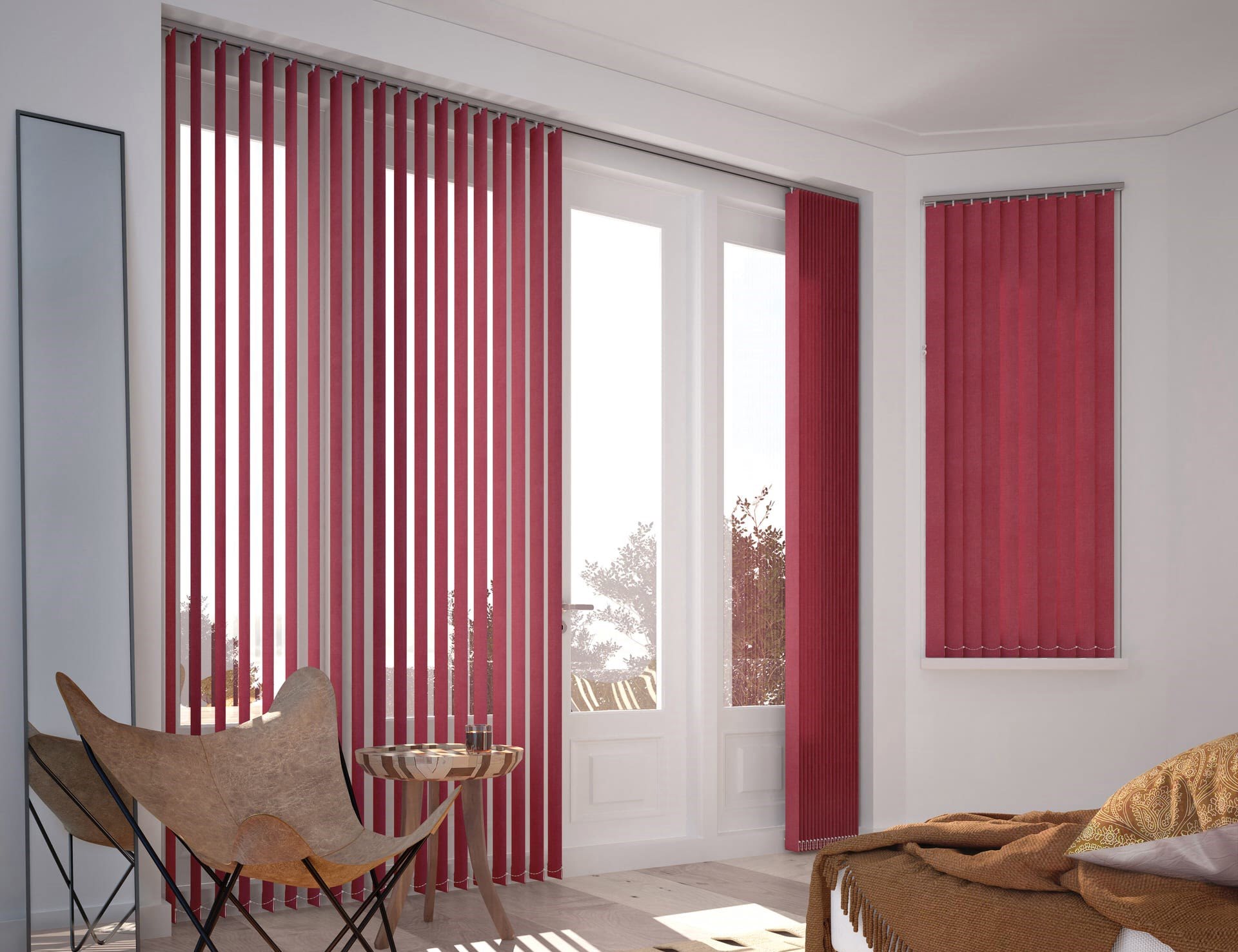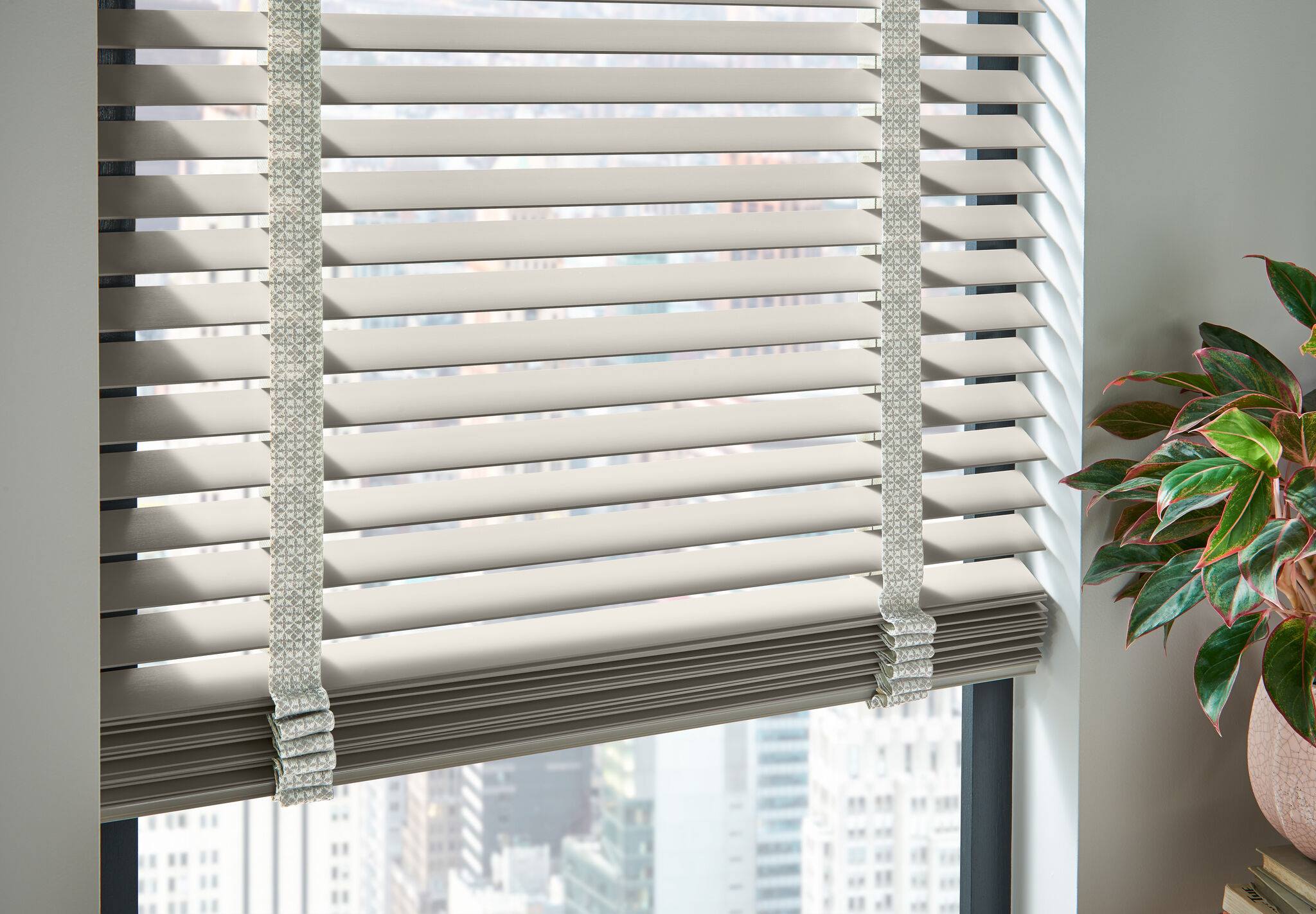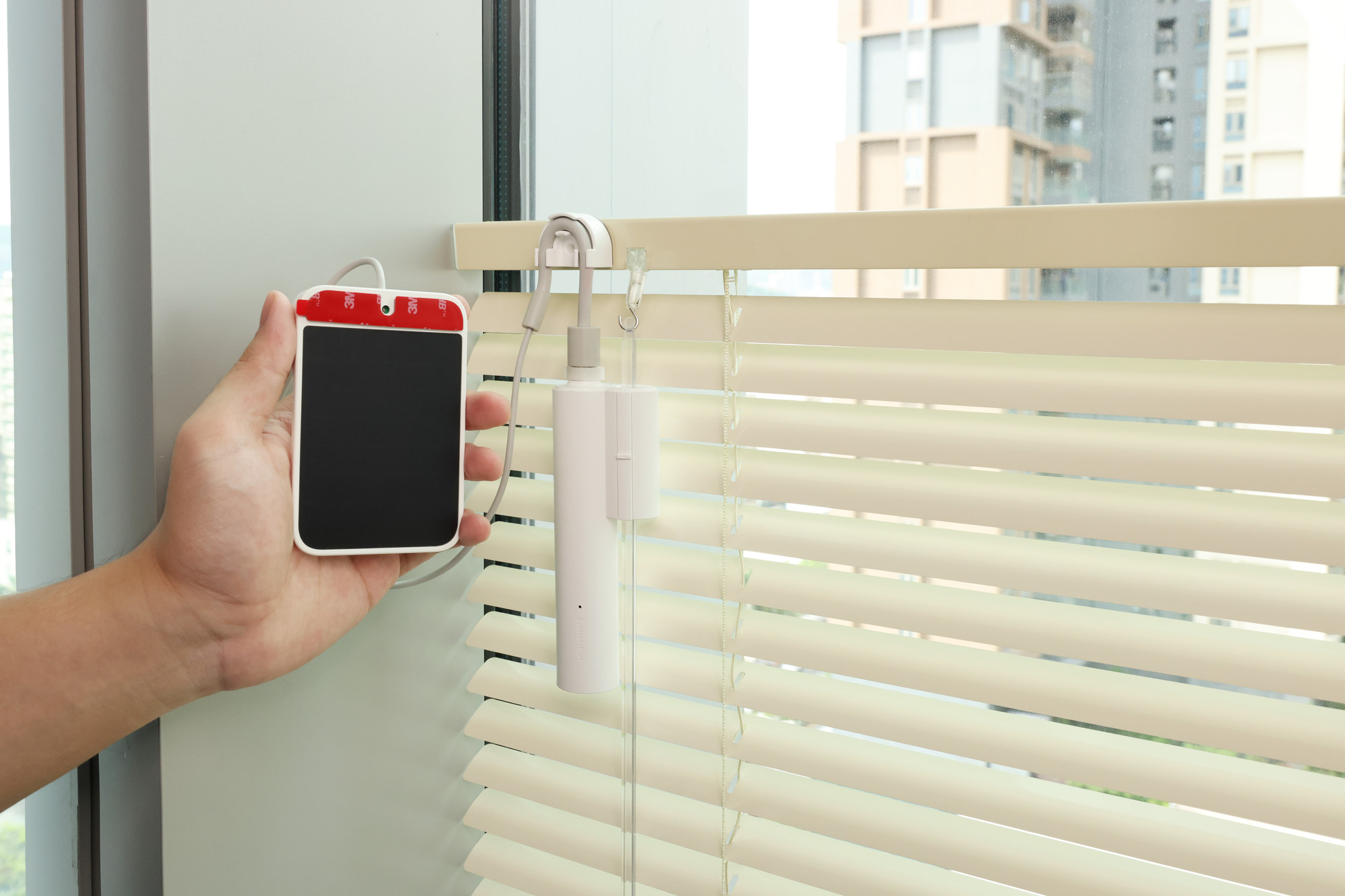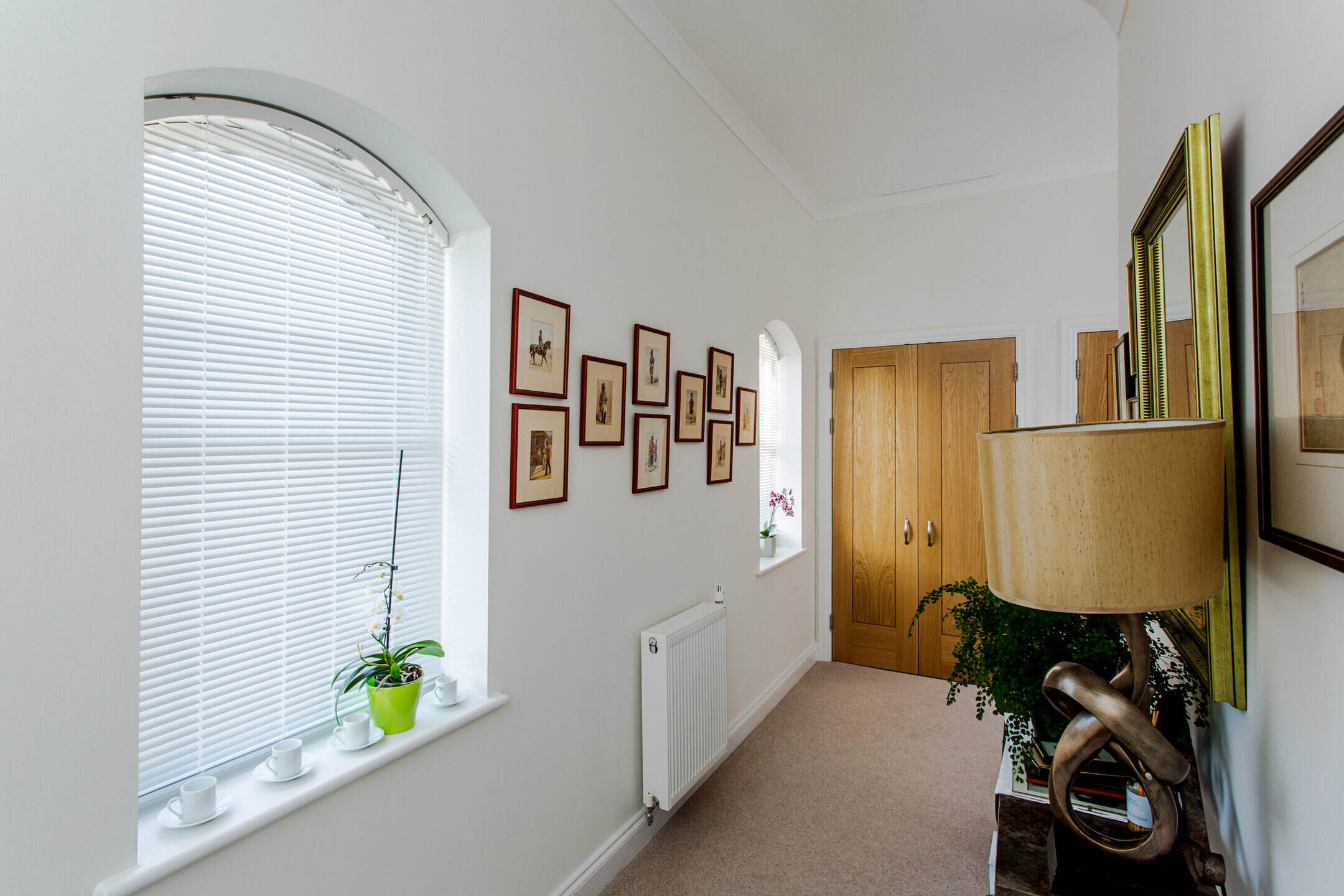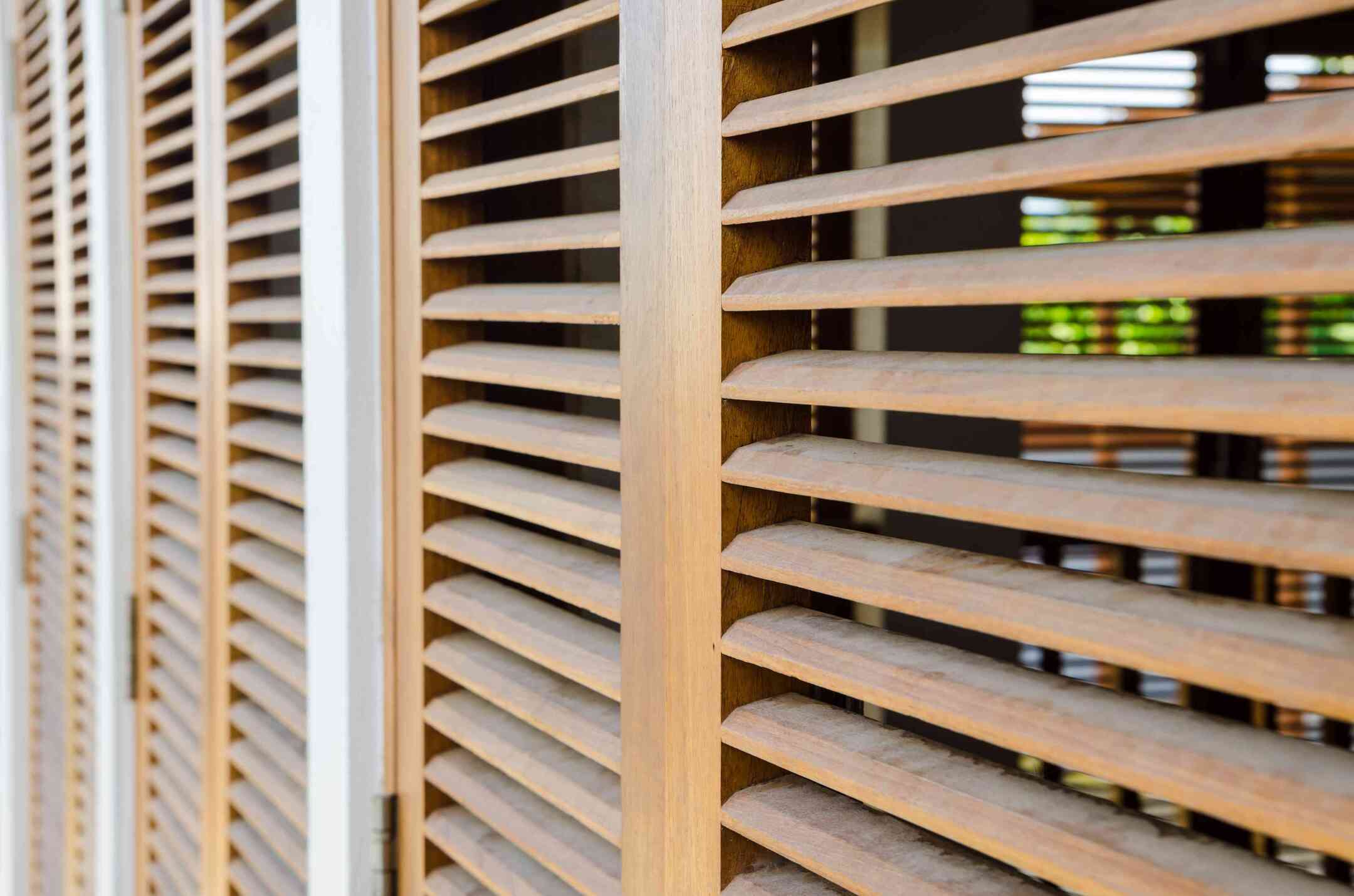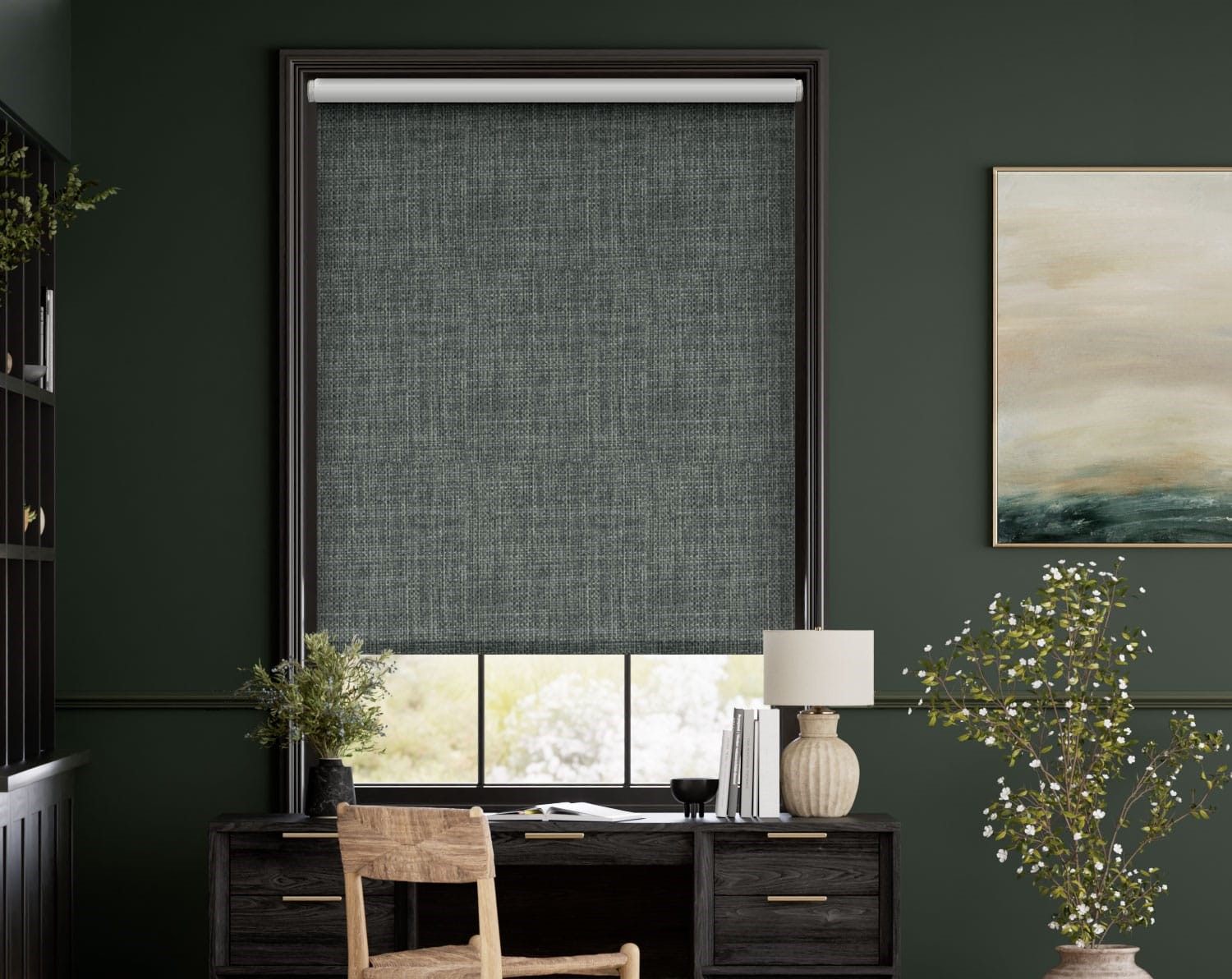

Articles
How To Make Blackout Blinds
Modified: January 18, 2024
Discover the best articles on how to blackout blinds, including step-by-step guides and expert tips for achieving full darkness in any room. Improve your sleep and create a cozy atmosphere with these informative resources.
(Many of the links in this article redirect to a specific reviewed product. Your purchase of these products through affiliate links helps to generate commission for Storables.com, at no extra cost. Learn more)
Introduction
Welcome to the comprehensive guide on blackout blinds! If you’re looking to create a cozy and dark environment in your home or office, blackout blinds are the perfect solution. Whether you’re a light sleeper, need to block out sunlight during the day, or want to enhance your home theater experience, blackout blinds offer a range of benefits and functionality.
In this article, we will explore the many advantages of blackout blinds, the different types available, how to choose the right ones for your needs, the installation process, maintenance and cleaning tips, as well as common issues and troubleshooting. By the end of this guide, you’ll have all the knowledge you need to make informed decisions about blackout blinds and create the ideal environment in your space.
So, let’s dive in and discover how blackout blinds can transform your living or working area!
Key Takeaways:
- Blackout blinds offer a multitude of benefits, including light control, privacy, temperature regulation, and versatile design options, making them a valuable addition to any space for both practicality and style.
- When choosing blackout blinds, consider factors such as the level of light blockage, window size and shape, style and aesthetics, ease of operation, energy efficiency, and budget to ensure you select the perfect blinds that align with your needs and preferences.
Benefits of Blackout Blinds
Blackout blinds offer a range of advantages and can greatly improve the functionality and comfort of any space. Here are some of the key benefits of using blackout blinds:
1. Light Control
One of the primary benefits of blackout blinds is their ability to block out sunlight completely. This is especially beneficial for those who work night shifts or need to sleep during the day. By effectively controlling the amount of light that enters a room, blackout blinds enable you to create an atmosphere that promotes relaxation and restful sleep.
2. Enhanced Privacy
Blackout blinds also provide excellent privacy, preventing people from seeing inside your home or office. This is particularly valuable for ground-floor rooms or spaces facing busy streets. With blackout blinds, you can enjoy your personal space without worrying about prying eyes.
3. Temperature Regulation
Another significant benefit of blackout blinds is their insulation properties. The thick, opaque materials used in blackout blinds help to regulate the temperature in a room, keeping it cool during hot summer months and retaining heat during winter. This not only contributes to your comfort but also helps to reduce energy consumption and lower utility bills.
Read more: Where Can I Buy Blackout Blinds
4. Protects Furniture and Flooring
Excessive exposure to sunlight can cause damage to furniture, flooring, and other valuable possessions. The UV rays can fade fabrics, discolor wooden surfaces, and weaken materials over time. By blocking out sunlight, blackout blinds provide an effective shield, preserving the integrity and longevity of your belongings.
5. Improved Acoustic Control
Blackout blinds are not only effective at blocking out light but also have sound-absorbing properties. They can help minimize outside noise, creating a quieter and more peaceful environment. This is particularly beneficial if you live in a bustling city or near busy roads.
6. Versatile Design Options
Blackout blinds come in a wide variety of designs, colors, and patterns, allowing you to choose the perfect style to complement your interior decor. Whether you prefer a sleek and modern look or something more traditional, blackout blinds offer versatility and the opportunity to enhance the aesthetic appeal of your space.
These are just a few of the many benefits that blackout blinds can provide. Now that we’ve explored the advantages, let’s dive into the different types of blackout blinds available.
Different Types of Blackout Blinds
When it comes to blackout blinds, there are various types to choose from, each offering unique features and benefits. Understanding the different options can help you make an informed decision based on your specific needs and preferences. Here are the most common types of blackout blinds:
Read more: How To Make Blackout Curtains Look Nice
1. Roller Blinds
Roller blinds are a popular choice for blackout blinds due to their simplicity and functionality. They consist of a fabric panel that rolls up and down, controlled by a chain or motorized mechanism. Roller blinds provide excellent light blockage when fully closed and can be adjusted to allow partial light in when desired.
2. Roman Blinds
Roman blinds are a stylish and elegant option for blackout blinds. They are made from soft fabric that folds into pleats when raised and lies flat when lowered. Roman blinds not only offer light control but also add a touch of sophistication to any room. They are available in various colors and patterns to suit different interior styles.
3. Vertical Blinds
Vertical blinds consist of vertical slats that can be tilted and adjusted to control both light and privacy. They are typically made from PVC or fabric and are a popular choice for larger windows and sliding glass doors. Vertical blinds can be fully closed to create a blackout effect, making them an ideal choice for bedrooms and living rooms.
4. Venetian Blinds
Venetian blinds are made of horizontal slats that can be rotated to control light and privacy. They are usually made from aluminum, wood, or faux wood, offering a sleek and contemporary look. While they may not provide complete darkness when closed, they offer a high level of light control and can be adjusted to let in diffused light.
Read more: How To Blackout Skylight
5. Cellular Shades
Cellular shades, also known as honeycomb blinds, are constructed with a unique cell-like structure that provides insulation and sound absorption. They are available in single or double cell designs, offering varying levels of light control and energy efficiency. Cellular shades are an excellent choice for blackout blinds, as they effectively block out light and maintain thermal comfort.
6. Panel Track Blinds
Panel track blinds are an ideal choice for sliding glass doors and large windows. They feature wide fabric panels that glide smoothly along a track, allowing for easy operation. Panel track blinds are available in light-blocking options, providing optimal light control and privacy.
These are just a few examples of popular types of blackout blinds. When selecting the right type, consider factors such as your desired level of light blockage, the size and shape of your windows, and the overall aesthetic you want to achieve. Now that you have an idea of the different types available, let’s move on to the next section to learn how to choose the right blackout blinds for your needs.
Choosing the Right Blackout Blinds for Your Needs
When it comes to choosing the right blackout blinds for your needs, there are several factors to consider. By keeping these factors in mind, you can select the perfect blinds that meet your requirements and enhance your space. Here are some key considerations:
1. Level of Light Blockage
Determine how much light blockage you require. If you need complete darkness, look for blinds that offer a high level of light-blocking capabilities. Roller blinds or Roman blinds with blackout lining are great options. If you prefer some light to filter through, consider Venetian blinds or cellular shades that allow for adjustable light control.
Read more: How To Make Roller Blinds
2. Window Size and Shape
Consider the size and shape of your windows. Some blinds may be better suited for larger windows, while others are more suitable for smaller or irregularly shaped windows. Measure your windows accurately to ensure a proper fit and select blinds that can be customized or adjusted to accommodate your specific window dimensions.
3. Style and Aesthetics
Take into account your interior decor and the overall style you want to achieve. The right blackout blinds should seamlessly blend with your existing decor and enhance the visual appeal of your space. Consider the color, pattern, and material options available to find blinds that complement your style. Roman blinds and roller blinds offer a wide range of design choices.
4. Ease of Operation
Consider the ease of operation and functionality of the blinds. Determine whether you prefer manual mechanisms such as chains or cords, or if you would prefer motorized options for added convenience. Motorized blinds can be controlled with a remote or even integrated into a smart home automation system.
5. Energy Efficiency
If energy efficiency is important to you, consider blinds that offer insulation properties. Cellular shades are known for their ability to trap air in their honeycomb structure, providing thermal insulation and reducing your heating and cooling costs. Look for blinds that are labeled as energy efficient to ensure maximum energy savings.
Read more: How To Make Roman Blinds
6. Budget
Lastly, consider your budget when choosing blackout blinds. Prices can vary depending on the type, size, and quality of the blinds. Set a budget range and explore options that fall within your financial parameters. Remember that blackout blinds are an investment that can provide long-term benefits, so it’s worth considering the quality and durability of the blinds as well.
By considering these factors, you can narrow down your options and choose the right blackout blinds that align with your needs, style, and budget. Now that you’ve selected the perfect blinds, let’s move on to the installation process.
Installation Process for Blackout Blinds
Installing blackout blinds may seem like a daunting task, but with the right tools and instructions, it can be a straightforward process. Follow these steps to install your blackout blinds:
1. Gather the Necessary Tools
Before you begin, make sure you have all the tools required for the installation. This usually includes a measuring tape, a pencil or marker, a drill, screws, and a screwdriver. Refer to the manufacturer’s instructions to determine any specific tools that may be needed for your particular type of blackout blinds.
2. Measure and Mark the Placement
Using a measuring tape, measure the width and height of your window frame. Make sure to measure accurately to ensure a proper fit. Mark the desired placement for your blinds with a pencil or marker, keeping in mind any obstructions such as handles or window locks that may affect the installation.
Read more: How To Make Wood Blinds
3. Mount the Brackets
Based on your measurements and markings, position the brackets for the blackout blinds on the window frame or wall. Use a drill and screws to securely mount the brackets in place. Ensure that the brackets are level and evenly spaced to support the weight of the blinds.
4. Attach the Blinds
Once the brackets are installed, carefully insert the headrail or top bar of the blinds into the brackets. Secure the blinds in place by following the specific instructions provided by the manufacturer. This may involve snapping, sliding, or tightening screws to hold the blinds securely.
5. Test the Operation
After the blinds are attached, test the operation to ensure they function properly. Open and close the blinds to check for smooth movement and adequate coverage. If any adjustments or fine-tuning are needed, refer to the manufacturer’s instructions for troubleshooting guidance.
6. Finishing Touches
Once the blackout blinds are installed and operational, make any necessary adjustments to ensure they hang straight and align properly. Trim any excess cords or chains for a cleaner and safer look. It’s also a good idea to clean the blinds before fully enjoying their benefits.
Keep in mind that these are general installation guidelines, and the specific steps may vary depending on the type and brand of blackout blinds you have. Always refer to the manufacturer’s instructions for the most accurate and detailed installation process.
Now that your blackout blinds are installed, let’s move on to the next section to learn how to maintain and clean them properly.
Read more: How To Make Venetian Blinds
Maintaining and Cleaning Blackout Blinds
To ensure your blackout blinds maintain their functionality and appearance over time, regular maintenance and proper cleaning are essential. Here are some tips to help you effectively maintain and clean your blackout blinds:
1. Regular Dusting
Dust can accumulate on the surface of your blinds, making them look dull and affecting their light-blocking capabilities. Regularly dust your blackout blinds using a soft cloth, feather duster, or vacuum cleaner with a brush attachment. Gently swipe across the surface of the blinds to remove any dust or debris.
2. Spot Cleaning
If you notice any stains or spots on your blackout blinds, spot cleaning is necessary. Use a mild soap or detergent diluted in warm water. Dampen a cloth or sponge with the solution and gently blot the affected area, taking care not to saturate the fabric. Allow the blinds to air dry completely before operating them.
3. Deep Cleaning
For a thorough clean, you can remove the blinds from the brackets and immerse them in a bathtub or large basin filled with warm soapy water. Gently agitate the blinds to loosen any dirt or grime, then rinse them with clean water. Hang the blinds to air dry before reinstalling them.
Read more: How To Wash Blackout Curtains
4. Avoid Harsh Chemicals
Avoid using abrasive or harsh cleaning agents on your blackout blinds, as they can damage the fabric or coating. Stick to mild soap or detergent solutions and gentle cleaning techniques to preserve the integrity of the blinds.
5. Check the Cords and Mechanisms
Regularly inspect the cords and mechanisms of your blackout blinds to ensure smooth operation and that everything is in good working condition. If you notice any frayed cords or issues with the mechanisms, contact a professional for repair or replacement.
6. Preventative Measures
To minimize dirt and dust buildup on your blackout blinds, consider implementing some preventative measures. Keep windows and doors closed as much as possible to reduce exposure to outdoor elements. You can also use air purifiers or humidifiers to improve air quality and reduce the likelihood of dust settling on the blinds.
By following these maintenance and cleaning tips, you can keep your blackout blinds looking fresh, clean, and operating effectively. Now, let’s address some common issues that can arise with blackout blinds and how to troubleshoot them.
Common Issues and Troubleshooting
While blackout blinds are designed to provide optimal light control and functionality, there may be some common issues that you might encounter. Here are a few common issues and troubleshooting tips to help you address them:
Read more: How To Make Your Own Blinds
1. Misaligned or Crooked Blinds
If your blinds appear misaligned or crooked, it could be due to uneven mounting or a problem with the brackets. Check to ensure that the brackets are securely attached and level. If necessary, adjust the position of the brackets to ensure the blinds hang straight and level.
2. Difficult to Raise or Lower
If your blackout blinds are difficult to raise or lower, it could be caused by excess friction in the mechanisms or debris buildup. Try lubricating the moving parts with a silicone-based lubricant or cleaning out any debris or obstructions that may be hindering smooth operation.
3. Excessive Light Leakage
If you notice light leaking through the edges or gaps in your blackout blinds, it could be due to improper installation or a poor fit. Check that the blinds are securely mounted inside the brackets and that there are no gaps between the blinds and the window frame. If necessary, consider adding blackout curtains or blinds to cover any remaining gaps.
4. Stained or Discolored Blinds
If your blackout blinds have stains or discoloration, spot cleaning or deep cleaning may be necessary. Try using a mild soap and warm water solution to gently clean the affected areas. If the stains are stubborn, you may need to consult the manufacturer’s instructions for specific cleaning recommendations or seek professional cleaning services.
Read more: How To Make Corded Blinds Safe
5. Damaged or Frayed Cords
If you notice that the cords on your blinds are damaged or frayed, it’s important to address this issue promptly for safety reasons. Contact the manufacturer or a professional blinds repair service to have the cords repaired or replaced. Avoid using the blinds until the cords are in good condition to prevent any accidents.
6. Motorized Blinds Not Functioning
If you have motorized blackout blinds and they’re not functioning properly, check that the batteries are fully charged or the power source is connected correctly. If the issue persists, refer to the manufacturer’s troubleshooting guide or contact their customer support for assistance.
By addressing these common issues and following the troubleshooting tips, you can ensure that your blackout blinds continue to perform optimally. If you encounter any complex issues or concerns, it’s always best to consult the manufacturer or seek professional assistance.
Now that we’ve covered the common issues and troubleshooting, let’s conclude our guide on blackout blinds.
Conclusion
Blackout blinds offer a range of benefits, including light control, privacy, temperature regulation, protection of furniture and flooring, improved acoustic control, and versatile design options. With different types to choose from, such as roller blinds, Roman blinds, vertical blinds, Venetian blinds, cellular shades, and panel track blinds, you have the flexibility to select the perfect option that suits your needs and complements your interior decor.
When choosing blackout blinds, consider factors such as the level of light blockage, window size and shape, style and aesthetics, ease of operation, energy efficiency, and your budget. By carefully considering these factors, you can ensure that you select the right blinds that meet your requirements and preferences.
After installing blackout blinds, it’s important to properly maintain and clean them to ensure their longevity and optimal performance. Regular dusting, spot cleaning, and occasionally deep cleaning can keep your blinds looking fresh and maintain their light-blocking capabilities. Additionally, inspecting cords and mechanisms, as well as implementing preventative measures, can help prevent issues and ensure smooth operation.
If you do encounter common issues with your blackout blinds, such as misalignment, difficulty in raising or lowering, light leakage, stains or discoloration, damaged cords, or problems with motorized blinds, following the troubleshooting tips provided can help address these issues and ensure your blinds function properly.
In conclusion, blackout blinds are a valuable addition to any space, providing you with control over light, privacy, and temperature. They offer practicality, style, and functionality. By selecting the right type of blinds and properly maintaining them, you can create a comfortable and blackout environment whenever you desire.
Now it’s time to explore the options available, choose your blackout blinds, and enjoy the benefits they bring to your space. Sweet dreams and happy blackout living!
Frequently Asked Questions about How To Make Blackout Blinds
Was this page helpful?
At Storables.com, we guarantee accurate and reliable information. Our content, validated by Expert Board Contributors, is crafted following stringent Editorial Policies. We're committed to providing you with well-researched, expert-backed insights for all your informational needs.
